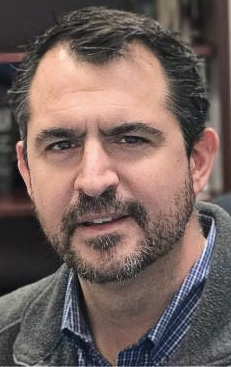

 Potential trademark Rights Protection Mechanisms (RPM) at the 2nd level can be divided into three main areas -- each defined by their time relative to Top-Level Domain (TLD) launch... Of these, we believe the third, "After Launch," is the most fruitful path to explore. We believe it offers the most potential to protect the rights of trademark holders, the best balance between TM rights and the legitimate rights of others who may want to register names , and the most benefit to the trademark community at the lowest cost to them... more
Potential trademark Rights Protection Mechanisms (RPM) at the 2nd level can be divided into three main areas -- each defined by their time relative to Top-Level Domain (TLD) launch... Of these, we believe the third, "After Launch," is the most fruitful path to explore. We believe it offers the most potential to protect the rights of trademark holders, the best balance between TM rights and the legitimate rights of others who may want to register names , and the most benefit to the trademark community at the lowest cost to them... more
 We read and hear a lot of complaints from trademark interests about allegedly rampant cybersquatting and other forms of trademark infringement, but it's rare to see a story about reverse domain name hijacking and other abuses committed by them. That's what made it so refreshing to see an article in the Saturday, April 4th Wall Street Journal titled "The Scariest Monster of All Sues for Trademark Infringement – Fancy Audio-Cable Outfit Defends Its Brands; A Mini Golf Course Fights Back". more
We read and hear a lot of complaints from trademark interests about allegedly rampant cybersquatting and other forms of trademark infringement, but it's rare to see a story about reverse domain name hijacking and other abuses committed by them. That's what made it so refreshing to see an article in the Saturday, April 4th Wall Street Journal titled "The Scariest Monster of All Sues for Trademark Infringement – Fancy Audio-Cable Outfit Defends Its Brands; A Mini Golf Course Fights Back". more
 The World Intellectual Property Organization (WIPO) asserted on Monday that new gTLDs from ICANN would unleash a global crime wave. This dire warning was bolstered by an astonishing statistic: a whopping eight per cent (8%) increase in UDRP complaints from 2007 to 2008! But WIPO's press release tells only a very little of the truth. Astonishingly, the UDRP system actually works pretty well... more
The World Intellectual Property Organization (WIPO) asserted on Monday that new gTLDs from ICANN would unleash a global crime wave. This dire warning was bolstered by an astonishing statistic: a whopping eight per cent (8%) increase in UDRP complaints from 2007 to 2008! But WIPO's press release tells only a very little of the truth. Astonishingly, the UDRP system actually works pretty well... more
The Technology Policy Institute (TPI), an IT and communications policy think tank, has just released a paper proposing that "ICANN's governance structure should be dramatically reformed to make it more accountable before the current tie with the U.S. Department of Commerce is allowed to expire." The paper titled "ICANN At a Crossroads: a Proposal for Better Governance and Performance" is written by Thomas M. Lenard, President and Senior Fellow at TPI, along with Lawrence J. White, Professor of Economics at the NYU Stern School of Business. The 52-page study also asserts that ICANN must have a clear focus on encouraging competition with minimal role as a regulator with respect to the creation of new generic Top-Level Domains (gTLDs). more
According to latest reports from the World Intellectual Property Organisation (WIPO), allegations of cybersquatting by trademark holders continued to rise in 2008, with a record 2,329 complaints filed under the Uniform Domain Name Dispute Resolution Policy (UDRP). This represented an 8% increase over 2007 in the number of generic and country code Top-Level Domain (gTLDs and ccTLDs) disputes handled and brings the total number of WIPO cases filed under the UDRP since it was launched ten years ago to over 14,000. To improve efficiency and respond to growing demand, WIPO has proposed an "eUDRP Initiative" to render the UDRP paperless... more
Trademark issues are emerging with the upcoming introduction of new generic top-level domains on the internet, and the board members of the body introducing the names has passed the ball back to intellectual property experts to find answers. The Intellectual Property Constituency of the Internet Corporation for Assigned Names and Numbers (ICANN) has been asked to work out a viable solution "no later than 24 May 2009." Trademark issues have been defined as one of four overarching issues still to be solved before ICANN can finalise the application procedure for the next hundreds or thousands of top-level domains from .eco to .music. more
 Saipan DataCom, Inc.’s upcoming late March 2009 open launch of chi.mp (“Content Hub & Identity Management Platform) has implications for trademark holders that seem to have gone unnoticed to date. Chi.mp is a free platform that enables social network users to create social hubs on their own stand-alone hosted Web sites... As an attorney representing both trademark owners and domain name registries, I see chi.mp as a unique situation. more
Saipan DataCom, Inc.’s upcoming late March 2009 open launch of chi.mp (“Content Hub & Identity Management Platform) has implications for trademark holders that seem to have gone unnoticed to date. Chi.mp is a free platform that enables social network users to create social hubs on their own stand-alone hosted Web sites... As an attorney representing both trademark owners and domain name registries, I see chi.mp as a unique situation. more
 The Internet Corporation for Assigned Names and Numbers (ICANN) has recently decided to allow any entity to register a top-level domain name (TLD). The best mechanism for valuing this decision, a mechanism that outperforms crowdsourcing, blogs, and committee decisions, is the legal and easy-to-implement solution known as prediction markets.
The Internet Corporation for Assigned Names and Numbers (ICANN) has recently decided to allow any entity to register a top-level domain name (TLD). The best mechanism for valuing this decision, a mechanism that outperforms crowdsourcing, blogs, and committee decisions, is the legal and easy-to-implement solution known as prediction markets.
In handing down its TLD decision, ICANN never identified the problem it was trying to solve... more
 During the sunrise period for .eu domains there was quite a bit of controversy, as a number of high profile names were grabbed by companies that had no legitimate right to them. One of the domains that caught my attention at the time was dublin.eu (see Irish Times article). So what about the .tel sunrise?
During the sunrise period for .eu domains there was quite a bit of controversy, as a number of high profile names were grabbed by companies that had no legitimate right to them. One of the domains that caught my attention at the time was dublin.eu (see Irish Times article). So what about the .tel sunrise?
Were companies like Lantec, who grabbed the dublin.eu domain, actively seeking high profile names this time round? more
 The following is an analysis based on the hypothesis that trademark holders are not, in general, registering their trademarks as domain names across the existing top-level domain namespace. To determine if the hypothesis is true, we examine domain names registered in the popular generic top-level domains ("gTLDs" such as .com, .net and .info), also using other publicly available information such as the USPTO database of trademarks, the English dictionary, DNS entries, UDRP records and whois records. more
The following is an analysis based on the hypothesis that trademark holders are not, in general, registering their trademarks as domain names across the existing top-level domain namespace. To determine if the hypothesis is true, we examine domain names registered in the popular generic top-level domains ("gTLDs" such as .com, .net and .info), also using other publicly available information such as the USPTO database of trademarks, the English dictionary, DNS entries, UDRP records and whois records. more
The World Intellectual Property Organization (WIPO) has sent to ICANN a letter proposing Paperless Uniform Domain Name Dispute Resolution Policy (UDRP)... This would save considerable amounts of paper, reduce courier charges (as the notice weighs far less than the full complaint), and thus would be good for the environment. more
 ICANN's plan to begin accepting applications for new generic top-level domains (gTLDs) in mid-2009 may have been derailed by last week's outpouring of opposition from the global business community and the United States Government (USG). Having been involved with ICANN for over a decade and having served on its Board for three years, I've never seen such strong and broad opposition to one of ICANN's proposals. more
ICANN's plan to begin accepting applications for new generic top-level domains (gTLDs) in mid-2009 may have been derailed by last week's outpouring of opposition from the global business community and the United States Government (USG). Having been involved with ICANN for over a decade and having served on its Board for three years, I've never seen such strong and broad opposition to one of ICANN's proposals. more
 A trademark owner who notices that someone else has registered a domain name incorporating the owner's mark can file an arbitration action under the Uniform Domain Name Dispute Resolution Policy (UDRP for short). This often serves as a quicker and less expensive alternative to pursuing the cybersquatter in court. To be successful under the UDRP, the "Complainant" has to show all of the following three elements... more
A trademark owner who notices that someone else has registered a domain name incorporating the owner's mark can file an arbitration action under the Uniform Domain Name Dispute Resolution Policy (UDRP for short). This often serves as a quicker and less expensive alternative to pursuing the cybersquatter in court. To be successful under the UDRP, the "Complainant" has to show all of the following three elements... more
 Whenever you register a domain name, your contact details are published in a publicly visible database called "Whois", where your contact details are instantly harvested by spambots and marketers who proceed to email and postal mail you marketing offers, deceptive "domain slamming" attempts, ads for dubious products, and perhaps even telemarketing calls. Nobody likes that, so over the years people started resorting to various tactics to protect themselves from the deluge of crap that inevitably comes with simply registering a domain name... more
Whenever you register a domain name, your contact details are published in a publicly visible database called "Whois", where your contact details are instantly harvested by spambots and marketers who proceed to email and postal mail you marketing offers, deceptive "domain slamming" attempts, ads for dubious products, and perhaps even telemarketing calls. Nobody likes that, so over the years people started resorting to various tactics to protect themselves from the deluge of crap that inevitably comes with simply registering a domain name... more
 As ICANN introduces new generic top level domains (gTLDs) and separates itself from US oversight, it has the opportunity to distance itself from the taint of cybersquatting, brand abuse, and criminal activity involving domains... To underscore the scope of the issue, consider this research on just 30 top Interbrand-ranked global brands. The most recent MarkMonitor Brandjacking Index found cybersquatting incidents increased over 40% in the last year for the brands that were studied; these leading brands suffered as many as 15,000 incidents per brand... more
As ICANN introduces new generic top level domains (gTLDs) and separates itself from US oversight, it has the opportunity to distance itself from the taint of cybersquatting, brand abuse, and criminal activity involving domains... To underscore the scope of the issue, consider this research on just 30 top Interbrand-ranked global brands. The most recent MarkMonitor Brandjacking Index found cybersquatting incidents increased over 40% in the last year for the brands that were studied; these leading brands suffered as many as 15,000 incidents per brand... more